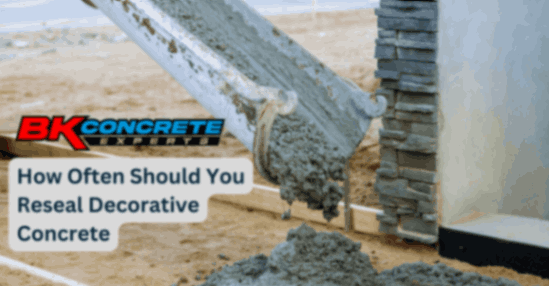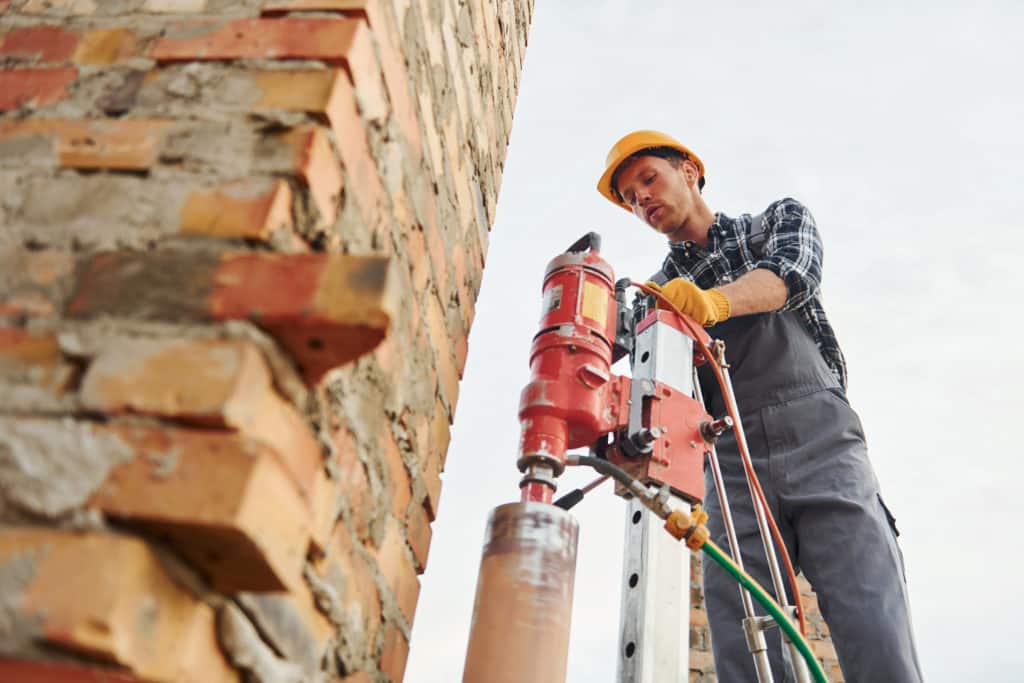Concrete floors are like the foundation of a building. They provide a sturdy base on which everything else rests. However, just like any other foundation, they can develop small cracks over time. While these cracks may seem insignificant, they can have a significant impact on the durability and longevity of an epoxy coating applied to the surface.
The question arises, is small crack repair necessary when doing epoxy on concrete floors? Epoxy coatings are an excellent way to enhance the look and durability of concrete floors. They provide a smooth, glossy finish that is resistant to abrasions, chemicals, and stains. However, epoxy coatings require a smooth surface to bond correctly. Any cracks or imperfections on the surface can compromise the finish and durability of the coating. Therefore, it is essential to assess the condition of the concrete floor before applying epoxy coatings and repair any cracks or imperfections to achieve the best results.
In this article, we will explore the importance of repairing small cracks before applying epoxy coatings to concrete floors and the methods used to achieve a smooth surface.
The Importance of a Smooth Surface for Epoxy Coatings
Achieving a smooth surface is crucial for ensuring proper adhesion and durability of epoxy coatings on concrete floors. When an epoxy coating is applied to a surface, it forms a strong bond with the substrate. This bond is essential for the coating to perform its intended function, such as providing chemical resistance, protection, or aesthetics. If the surface is not smooth, the epoxy coating may not adhere properly, resulting in delamination, peeling, or blistering.
Therefore, it is essential to prepare the surface adequately to achieve a smooth and clean substrate. To achieve a smooth surface, it is necessary to remove any contaminants, such as dirt, oil, or grease, from the concrete surface. These contaminants can interfere with the adhesion of the epoxy coating and reduce its durability. Additionally, any cracks or holes in the concrete should be repaired before applying the epoxy coating.
Small cracks may seem insignificant, but they can compromise the integrity of the coating and lead to its failure over time. Therefore, it is essential to repair these cracks to ensure proper adhesion and durability of the epoxy coating. Achieving a smooth surface is crucial for ensuring proper adhesion and durability of epoxy coatings on concrete floors.
Surface preparation involves removing contaminants and repairing any cracks or holes in the concrete. By following these steps, the epoxy coating can bond correctly with the substrate and provide the desired performance. Neglecting surface preparation can result in premature failure of the coating, which can be costly and time-consuming to repair.
How Small Cracks Can Compromise Epoxy Durability and Finish
The durability and finish of an epoxy coating can be compromised by the presence of even minor imperfections in the underlying substrate. Small cracks in concrete floors, for example, can lead to a variety of issues that affect the performance and appearance of an epoxy coating.
In particular, small cracks can allow moisture and other substances to penetrate the substrate, leading to delamination, bubbling, and other forms of damage. To prevent such problems, it is essential to repair any small cracks in the concrete floor before applying an epoxy coating. This involves filling the cracks with an appropriate material, such as a two-part epoxy or a specialized concrete patching compound.
By doing so, you can ensure that the underlying substrate is free of any defects that could compromise the adhesion and durability of the epoxy coating. In addition to filling small cracks, it is also important to address any larger cracks or other imperfections in the concrete floor.
This may involve grinding or shot blasting the surface to create a smooth, even substrate that is free of any bumps, ridges, or other irregularities. By taking these steps, you can ensure that your epoxy coating adheres properly to the underlying substrate, providing a durable and attractive finish for years to come.
The Risks of Not Repairing Small Cracks Before Epoxy Application
Despite the potential risks of leaving imperfections untreated, some may argue that the time and cost of repairing the substrate before applying an epoxy coating outweigh the benefits.
However, it is important to understand that small cracks can compromise the durability and finish of the epoxy coating. These cracks can lead to the formation of voids, which can weaken the bond between the substrate and the coating. This can result in premature failure of the coating and the need for costly repairs or replacement.
In addition, small cracks can also allow moisture to seep into the substrate, which can lead to further damage and deterioration. Moisture can cause the substrate to expand and contract, which can create additional cracks and compromise the integrity of the coating. This can also lead to the growth of mold and mildew, which can be difficult to remove once they have taken hold.
Therefore, it is essential to repair small cracks before applying epoxy coatings to concrete floors. This will ensure a strong bond between the substrate and the coating, as well as prevent the formation of voids and the infiltration of moisture. Ultimately, taking the time and effort to properly prepare the substrate will result in a longer-lasting and more durable epoxy coating.
Methods for Repairing Small Cracks in Concrete Floors
One effective way to ensure the longevity of an epoxy coating on a concrete floor is to address any imperfections in the substrate prior to application. Small cracks in concrete floors can be a serious concern as they can lead to bigger issues over time.
Fortunately, there are several methods for repairing small cracks in concrete floors to ensure a smooth and even surface for epoxy application.
One method for repairing small cracks is to use a concrete patching compound. These compounds are specifically designed to fill in cracks and holes in concrete surfaces before they are coated with an epoxy finish. The compound is applied directly to the crack and allowed to dry before being sanded down to a smooth finish. This method is quick and effective, but it may not be suitable for larger cracks or those that are more severe.
Another method for repairing small cracks is to use an epoxy injection. This involves injecting a two-part epoxy mixture into the crack and allowing it to harden. The epoxy mixture binds with the concrete to create a strong, seamless bond that prevents further cracking. This method is ideal for cracks that are too large to be filled with a patching compound, and it is also a good option for repairing cracks in areas with heavy foot traffic or equipment.
A third method for repairing small cracks is to use a concrete resurfacer. This involves applying a thin layer of concrete over the entire surface of the floor to create a smooth and even substrate. This method is ideal for floors with multiple cracks or those that are badly damaged, as it creates a new surface for the epoxy coating to adhere to. However, it is important to note that this method can be more expensive and time-consuming than the other two methods.
Overall, the key to a successful epoxy coating on a concrete floor is to address any imperfections in the substrate before application, and these methods can help achieve that goal.
Achieving the Best Results with Epoxy Coatings
Achieving optimal results with epoxy coatings requires a meticulous approach, as ‘the devil is in the details.’ The success of epoxy coatings on concrete floors is highly dependent on the preparation of the surface. Any small cracks, holes, or other imperfections must be repaired prior to applying the coating. This ensures that the coating adheres properly and creates a smooth, even surface.
In addition to repairing small cracks, it is important to properly clean and prepare the concrete surface. Any dust, debris, or oil must be removed to ensure a proper bond between the concrete and epoxy coating. This can be achieved through a variety of methods, including shot blasting, diamond grinding, and acid etching. The method used will depend on the condition of the concrete and the desired end result.
Once the surface has been properly prepared, the application of the epoxy coating requires careful attention to detail. The thickness of the coating, the number of coats applied, and the curing time all play a role in achieving the best results. It is important to follow the manufacturer’s instructions carefully and avoid taking shortcuts.
By taking a meticulous approach to the preparation and application of epoxy coatings on concrete floors, optimal results can be achieved, creating a durable, attractive surface that will withstand heavy use and provide long-lasting performance.
Frequently Asked Questions
What other types of concrete floors can benefit from epoxy coatings besides smooth ones?
Epoxy coatings are a popular choice for concrete floors due to their durability, resistance to chemicals, and aesthetic appeal.
While smooth concrete floors are an obvious candidate for epoxy coatings, there are many other types of concrete floors that can benefit from this treatment.
For instance, concrete floors that are porous, stained, or damaged can be improved with epoxy coatings.
Additionally, epoxy coatings can be applied to concrete floors that are exposed to heavy foot traffic or machinery, as they provide a protective layer that can withstand wear and tear.
It is important to note, however, that proper surface preparation is key for a successful epoxy coating application, and small crack repair may be necessary to ensure a smooth and level surface.
Can epoxy coatings hide large cracks or should they be repaired first?
Epoxy coatings are commonly used to enhance the appearance and performance of concrete floors. However, they are not designed to hide large cracks on the surface. In fact, epoxy coatings tend to accentuate cracks and imperfections on the concrete substrate. Therefore, it is recommended to repair large cracks before applying an epoxy coating.
This will ensure a smoother and more even surface, as well as a longer-lasting and more durable coating. Small cracks, on the other hand, can be filled with epoxy filler or a similar product prior to applying the coating.
It is important to note that the success of an epoxy coating depends on the condition of the substrate, including its cleanliness, porosity, and structural integrity.
Is it possible to apply epoxy coatings to outdoor concrete surfaces?
Epoxy coatings can be applied to outdoor concrete surfaces, but there are several factors that must be considered before doing so.
First, the concrete surface must be thoroughly cleaned and prepped to ensure proper adhesion of the epoxy coating. This may involve using a pressure washer or chemical cleaners to remove any dirt, oil, or other contaminants.
Additionally, it is important to ensure that the concrete surface is completely dry before applying the epoxy. Moisture can interfere with the curing process and compromise the integrity of the coating.
Finally, it is recommended to use an epoxy coating that is specifically designed for outdoor use, as these coatings often contain UV-resistant additives to prevent fading or discoloration over time.
Overall, with proper preparation and selection of the appropriate coating, it is possible to successfully apply epoxy coatings to outdoor concrete surfaces.
How long does it typically take for repaired cracks to fully cure before applying epoxy coatings?
The process of repairing cracks in concrete floors before applying epoxy coatings can be compared to the act of preparing a canvas before beginning a painting. The canvas must be free of any imperfections to ensure that the paint adheres properly and the final product is of high quality.
Similarly, concrete floors must be repaired and smoothed out to ensure that the epoxy coating has a strong bond and does not peel or crack over time. The curing time for repaired cracks can vary depending on the size and severity of the crack, as well as the temperature and humidity of the environment.
It is generally recommended to wait at least 24 hours for small cracks to fully cure before applying the epoxy coating. Larger cracks may require several days of curing time before the epoxy can be applied. In any case, it is important to follow the manufacturer’s instructions and to allow ample time for the cracks to fully cure before proceeding with the epoxy application.
Are there any special steps or precautions to take when applying epoxy coatings to high-traffic areas?
When it comes to applying epoxy coatings to high-traffic areas, there are a few special steps and precautions that should be taken.
Firstly, it is important to properly prepare the surface by thoroughly cleaning and degreasing it, and patching any large cracks or holes. Additionally, it may be necessary to use a primer to ensure proper adhesion of the epoxy coating.
In terms of application, it is recommended to apply the coating in thin, even layers to avoid bubbles or other imperfections. It is also important to allow for sufficient drying and curing time before allowing foot traffic or heavy equipment on the surface.
Finally, regular maintenance and cleaning should be implemented to ensure the longevity of the epoxy coating in high-traffic areas.
Conclusion
A smooth surface is essential when applying an epoxy coating to concrete floors. Small cracks, although seemingly insignificant, can compromise the durability and finish of the epoxy. Failure to repair these cracks before application can lead to costly repairs and a subpar finish.
Fortunately, there are several methods for repairing small cracks in concrete floors. One effective method is to use a concrete patching compound, which can be applied to the crack and smoothed out with a trowel. Another option is to use a concrete filler, which is applied similarly but is designed to expand and contract with the concrete.
No matter the method, it is crucial to allow ample time for the repair to fully cure before proceeding with the epoxy application. In conclusion, small crack repair is necessary when doing epoxy on concrete floors. Failure to repair these cracks can lead to costly repairs and a subpar finish. By using effective repair methods and allowing ample cure time, the best results can be achieved with epoxy coatings. As the saying goes, ‘an ounce of prevention is worth a pound of cure.’
Taking the time to repair small cracks before applying epoxy is a preventative measure that will ensure a smooth and durable finish.

 CALL US NOW
CALL US NOW



